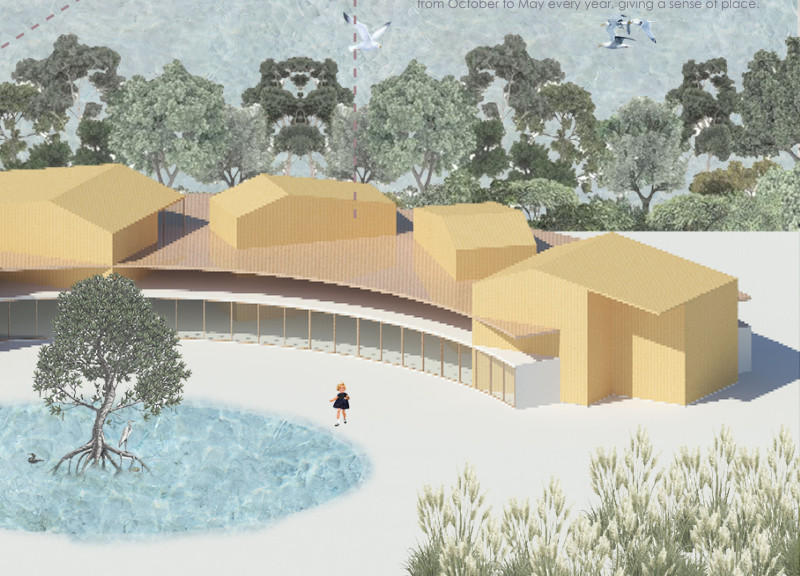5 key facts about this project
The architectural design at BangPu Recreation Center in Samutprakarn, Thailand, exemplifies a thoughtful approach to pediatric palliative care by focusing on the integration of natural elements. The project aims to improve patient well-being by connecting motion and sunlight to enhance emotional health. Designed with the specific needs of children in mind, the layout promotes an environment that supports both individual quiet time and communal interactions.
Spatial Organization
The center's layout is carefully organized into distinct areas that reflect daily routines of patients and caregivers. Rooms accommodate groups of five, fostering social connections that provide essential emotional support. This arrangement encourages shared activities and reinforces a sense of community, promoting interaction among occupants.
Emotional Considerations
Attention to the emotional landscape of pediatric patients informs the design throughout the facility. Four main emotional states—stress, discomfort, annoyance, and loneliness—are considered in the planning process. Spaces enable children to shift their perspectives, helping to relieve stress. Areas for creative expression are integrated throughout, allowing for the communication of emotions. Layouts also assist in accommodating posture changes, which can alleviate physical discomfort.
Light and Movement
Natural light and airflow play significant roles in the design. U-shaped configurations allow light to penetrate the interior, creating a bright and welcoming environment. Windows and openings frame views of the surrounding landscape, particularly the sunrise and sunset, encouraging a connection to nature. Transition spaces provide opportunities for exploration, moving from enclosed areas to open layouts that offer relaxation and a sense of freedom.
Environmental Engagement
The design incorporates ecological aspects, such as the annual migration of more than 2,000 bird species. This feature enriches the atmosphere for patients and visitors, providing educational opportunities and enhancing the overall experience. By blending nature with the built environment, the design highlights the importance of engaging with local ecosystems.
Throughout the facility, the arrangement of spaces, circulation paths, and attention to light create an atmosphere of comfort and healing. Daylight filters through various openings, casting dynamic shadows that shape the interior experience, inviting occupants to engage with their surroundings in meaningful ways.



















































